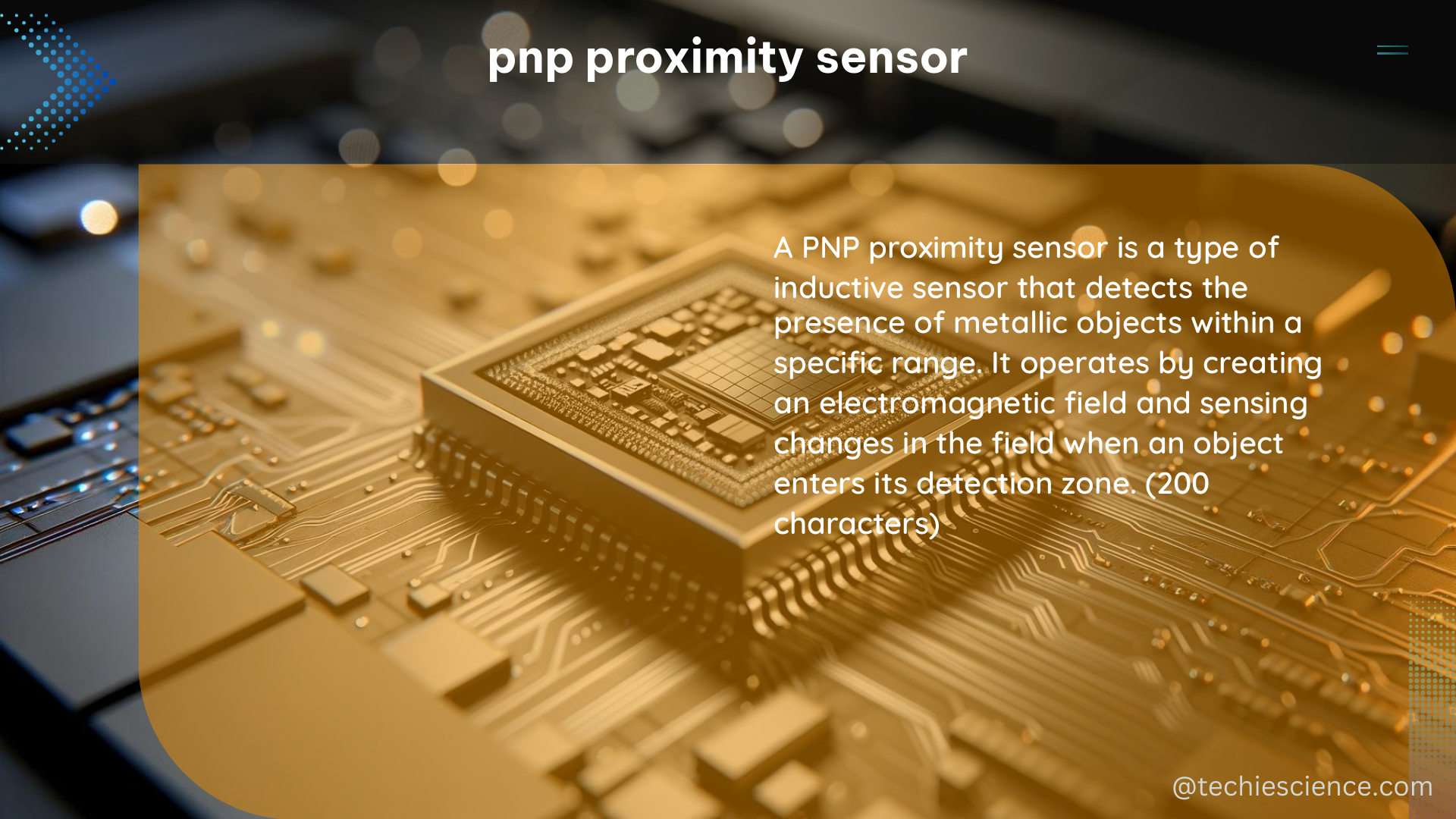A PNP proximity sensor is an electronic device that utilizes the principle of electromagnetic induction to detect the presence or absence of metallic objects without physical contact. These sensors are widely employed in industrial automation, robotics, and process control applications, offering reliable and precise object detection capabilities.
Technical Specifications of PNP Proximity Sensors
The technical specifications of a PNP proximity sensor typically include the following measurable and quantifiable data:
1. Sensing Distance
The sensing distance is the maximum distance at which the sensor can reliably detect the presence of a metallic object. This parameter is usually specified in millimeters (mm) or inches (in). For example, a common PNP proximity sensor may have a sensing distance of 2-10 mm or 0.08-0.39 inches.
2. Output Signal
The output signal is the electrical signal generated by the sensor when it detects a metallic object. This signal can be either digital (on/off) or analog (varying voltage or current). The output signal is typically specified in volts (V) or milliamperes (mA). A common digital output signal for a PNP proximity sensor is 24 VDC, while an analog output signal may range from 0-10 V or 4-20 mA.
3. Response Time
The response time is the time it takes for the sensor to respond to a change in the presence or absence of a metallic object. This parameter is usually specified in milliseconds (ms) or microseconds (μs). Typical response times for PNP proximity sensors range from 0.5 ms to 2 ms.
4. Temperature Range
The temperature range is the range of temperatures over which the sensor can operate reliably. This is usually specified in degrees Celsius (°C) or Fahrenheit (°F). Common temperature ranges for PNP proximity sensors are -25°C to +70°C (-13°F to +158°F) or -40°C to +85°C (-40°F to +185°F).
5. Mounting Requirements
The mounting requirements include the size and shape of the sensor, as well as any mounting hardware or accessories that may be required. PNP proximity sensors are available in various form factors, such as cylindrical, rectangular, or flush-mount, with different thread sizes (e.g., M8, M12, or M18) and mounting options (e.g., threaded, flush, or bracket-mounted).
6. Environmental Ratings
The environmental ratings indicate the sensor’s resistance to moisture, vibration, and other environmental factors. These ratings are typically specified in terms of IP (Ingress Protection) or NEMA (National Electrical Manufacturers Association) ratings. For example, a PNP proximity sensor with an IP67 rating is dust-tight and can withstand temporary immersion in water, while a NEMA 4X rating indicates the sensor is suitable for use in wet, corrosive, or hose-down environments.
PNP Proximity Sensor DIY Project

When undertaking a PNP proximity sensor DIY project, the following steps can be followed:
-
Select a Sensor: Choose a PNP proximity sensor that meets your specific requirements, such as sensing distance, output signal, response time, temperature range, and environmental ratings. Consider factors like the size and shape of the sensor, as well as any mounting hardware or accessories that may be needed.
-
Connect the Sensor: Connect the PNP proximity sensor to a power supply and a signal conditioning circuit, such as an operational amplifier or a microcontroller. Ensure that the power supply voltage and current ratings are compatible with the sensor’s specifications.
-
Test the Sensor: Test the sensor by placing a metallic object within the sensing distance and observing the output signal. Verify that the sensor is functioning as expected and that the output signal is consistent with the sensor’s specifications.
-
Calibrate the Sensor: Calibrate the sensor by adjusting the signal conditioning circuit to produce a known output signal for a known input. This may involve adjusting the gain, offset, or threshold of the circuit to optimize the sensor’s performance.
-
Integrate the Sensor: Integrate the PNP proximity sensor into a larger system, such as a robot or a process control system. This may involve writing software to interpret the sensor’s output signal and use it to control other components or devices.
By following these steps, you can successfully implement a PNP proximity sensor in your DIY project, leveraging its reliable and precise object detection capabilities to enhance the functionality and performance of your system.
References
- PNP Proximity Sensor Datasheet
- PNP Proximity Sensor Selection Guide
- PNP Proximity Sensor DIY Project

The lambdageeks.com Core SME Team is a group of experienced subject matter experts from diverse scientific and technical fields including Physics, Chemistry, Technology,Electronics & Electrical Engineering, Automotive, Mechanical Engineering. Our team collaborates to create high-quality, well-researched articles on a wide range of science and technology topics for the lambdageeks.com website.
All Our Senior SME are having more than 7 Years of experience in the respective fields . They are either Working Industry Professionals or assocaited With different Universities. Refer Our Authors Page to get to know About our Core SMEs.